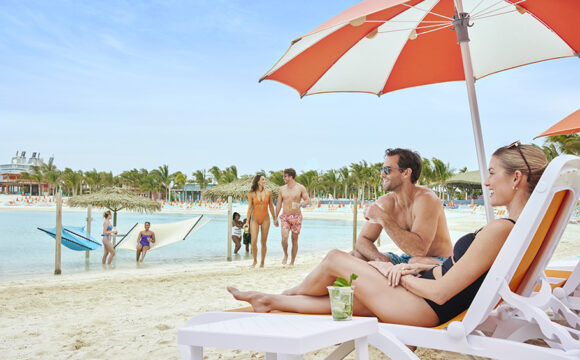It’s often said that the Canary Islands are a miniature continent, not only because of its range of landscapes, but also the rich cuisine that each of the islands has to offer.
From the fresh seafood of the north, to the modern fusion restaurants of the south, take your taste buds on a gastronomic journey in the Canary Islands.
A World of Flavours
Tradition and innovation collide in Canarian cuisine. The islands boast some outstanding emerging young chefs, like Juan Santiago, World’s Best Young Chef 2015 Finalist. Santiago is known for experimenting with tradition, creating culinary delights such as the liquid croquette or the croquette foam, among others. As Santiago puts it, with 15 million tourists visiting the Canary Islands every year, it’s inevitable that new tastes and concepts keep emerging. Flavours of Spain, Latin America and Africa cross paths in this archipelago, forming a very unique culinary identity.
Tenerife for instance, the largest of the Canary Islands, is home of the famous Papas Negras (‘black’ potatoes) and known for Guachinches – humble, family-run restaurants, where guests enjoy local dishes at affordable prices. Haute cuisine and destination dining also has its place on the island. Five of the six Michelin star restaurants of the Canary Islands are situated on Tenerife.
In modern Canarian cuisine, foams and other methods associated with molecular cookery are combined with traditional fish dishes, the famous Canarian mojo sauces, award-winning cheeses, as well as bananas and pineapples, popular throughout Europe.
From the net to table
The Atlantic Ocean surrounds the Canary Islands and traditional fishing, regulated by legislation to preserve stocks and marine ecosystems, is a way of life. The waters around the islands are home to an incredible variety of fish, such as cherne, Atlantic croaker, salema, and sea bream. Whether grilled, baked, marinated or fried, these fish give a true taste of the Atlantic. Sancocho is a dish of South American origins which is popular in the Canaries, consisting of salted fish served with potatoes, sweet potatoes, and mojo – the iconic sauce of the Canary Islands, made with olive oil, peppers and assorted spices.
Of course, nothing beats enjoying lunch or dinner by the sea, with a cooling breeze, a symphony of coastal sounds and the seductive aromas of freshly grilled fish wafting through the air. On the island of Gran Canaria, make your way over to the neighbourhood of San Cristóbal and Bar Zurita, where guests can enjoy fresh-off-the-boat octopus and calamari overlooking the sea. Also recommended is La Bahía del Pajar at Arguineguín, or any of the eateries at El Medáno – without doubt the most beautiful beach on Tenerife. If you find yourself on Lanzarote or La Graciosa – the smallest of the Canary Islands – tuck into a plate of tiny, tasty La Santa prawns accompanied with nothing but a slice of lemon and a cold beer, you won’t be disappointed!
0 KM Cuisine
Chef Juan Santiago is a strong advocate of 0 KM cuisine, he explains “Buying and eating local produce, shortening distances between land or sea and the kitchen, and importing as little as possible.” This philosophy has yielded remarkable results; for the environment, for producers and, most of all, our taste buds.
The philosophy of 0 KM cuisine has always influenced eating habits on the Canary Islands. The most popular meat is not beef, but pork, rabbit, and goat. The best goats are reared in La Palma, El Hierro and La Gomera, where it is mandatory to try roast baby goat. The meat has a strong flavour and is eaten with your hands. Accompanied with Papas Arrugadas (small potatoes with a salty crust), it’s perfection.
No meal on the Canary Islands is complete without local bread, essential for mopping up any mojo sauce left on the plate; a good wine, such as dry white from La Gomera, one of the world’s most unique wine regions, and above all, cheese.
Canarian cheeses, especially those of the islands of Gran Canaria and Fuerteventura, are among the best in the world. In the 2018 edition of the World Cheese Awards, no less than 35 cheeses made on the Canary Islands received awards. Standout farmhouse cheeses include Maxorata; a semi cured goat’s cheese spice with smoky paprika, and Majorero, a firm goat’s milk cheese similar to Manchego. Perhaps the most traditional Canarian cheese is Flor de Guía; a creamy, slightly salty cheese made with an exact combination of cow’s and goat’s milk and liquid extracted from thistle flowers (flors de guía) for the curdling process.
For the Sweet Tooth
The tradition of pastries, cakes and desserts from the Canary Islands is remarkable and largely unique, even to the rest of Spain. Take for instance, the Truchas de Batata of Lanzarote, a crescent –shaped Christmas pastry of almonds, raisins, sweet potatoes and a hint of anise. From Fuerteventura we have the puff shaped Suspiros de Moya Meringues, and Leche Machanga; creamy custard spiced with lemon and cinnamon. Over on the island of La Palma, Príncipe Alberto is a sinful, creamy dessert of sponge cake, chocolate, almonds and hazelnuts.
‘This quickest way to the heart is through the stomach.’ The people of the Canary Islands know the meaning of this all too well. Canarians identify as much with their local foods as with their oceans, beaches and majestic volcanic landscapes. So, treat your taste buds and discover Canarian cuisine.
















